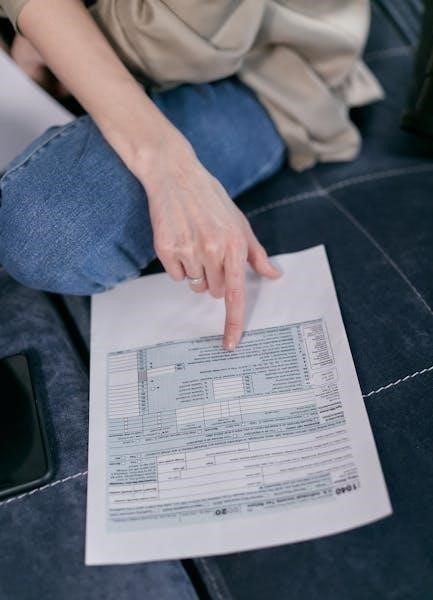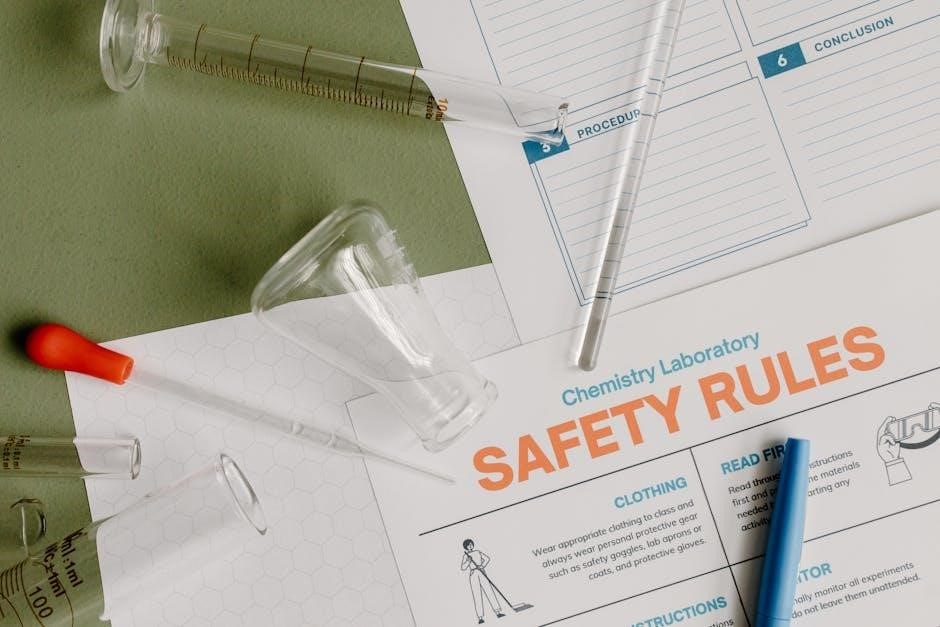
optoma projector instruction manual
Welcome to the Optoma Projector Instruction Manual. This guide provides comprehensive instructions for setting up, operating, and troubleshooting your projector. Designed for ease of use, it covers basic functions, advanced features, and maintenance tips to ensure optimal performance. Whether you’re a novice or experienced user, this manual will help you unlock the full potential of your Optoma projector.
1.1 Understanding the Projector Basics
Understanding the basics of your Optoma projector is essential for optimal use. A projector is a device that projects images or video onto a screen or surface using light and digital technology. Key components include the projection lamp, DLP chip, and lens, which work together to deliver crisp, vibrant visuals. The projector operates by receiving a video signal from an external device, processing it, and projecting the image. Familiarize yourself with the remote control, as it simplifies navigation and adjustments. Proper setup and maintenance ensure long-lasting performance and image quality.
1.2 Key Features of Optoma Projectors
Optoma projectors are renowned for their cutting-edge technology and versatile features. They offer high-resolution displays, including 4K and Full HD options, ensuring sharp and detailed visuals. Many models feature laser light sources for bright, vibrant images and long lifespans. Advanced features like keystone correction and lens shift allow for precise image alignment. Additionally, Optoma projectors support 3D projection, enhancing immersive viewing experiences. With low-maintenance designs and user-friendly interfaces, these projectors cater to both home entertainment and professional environments, delivering exceptional performance and reliability.

Safety Precautions and Important Notes
Ensure proper ventilation to prevent overheating. Avoid blocking air vents and handle components with care. Follow all safety guidelines to maintain reliable operation and prevent damage.
2.1 General Safety Guidelines
Always ensure proper ventilation to prevent overheating. Avoid blocking air vents and handle components with care. Do not expose the projector to direct sunlight or moisture. Keep the device out of reach of children. Never touch the lens with bare hands to avoid smudging. Follow all safety instructions provided in the manual to ensure reliable operation and prevent damage. Additionally, ensure the projector is installed correctly and used in accordance with the guidelines to maintain optimal performance and safety.
2.2 Handling the Projector and Components
Handle the projector and its components with care to avoid damage. Avoid touching the lens to prevent smudging, and clean it only with a soft, dry cloth. When moving the projector, ensure it is securely packed or held to prevent physical stress. Components like cables and adapters should be stored properly to avoid damage. Never expose the projector to extreme temperatures, moisture, or direct sunlight. Store accessories in a dry, cool place to maintain their functionality. Always follow the manufacturer’s guidelines for handling to ensure the longevity of your projector and its components.

Unpacking and Physical Setup
Unbox your Optoma projector carefully, ensuring all components are included. Place the projector on a stable, flat surface. Connect the power cable and any external devices. Follow the setup guide for proper installation. Handle the projector gently to avoid damage. Ensure the lens is clean and free from obstructions for optimal performance. Properly route cables to maintain a safe and organized setup. Enjoy your enhanced viewing experience with your new projector.
3.1 Unpacking the Projector and Accessories
Carefully unpack the projector and verify all components are included. This typically includes the projector unit, power cord, remote control, and connection cables. Ensure the lens is protected during unpacking. Handle the projector with care to avoid damage. Place it on a flat, stable surface to prevent accidental tilting. Check for any additional accessories, such as a lens cap or mounting hardware. Organize cables neatly to avoid tangling. Review the contents list in the manual to confirm everything is accounted for. Discard packaging materials responsibly.
3.2 Installing the Projection Lamp
Before installing the projection lamp, ensure the projector is powered off and cooled down. Locate the lamp compartment, usually accessed from the top or rear. Remove the lamp cover using the provided screws. Gently pull out the old lamp by the handle, taking care not to touch the bulb. Insert the new lamp, aligning it properly, and secure it with the screws. Replace the lamp cover and tighten it firmly. Turn on the projector to test the lamp. Reset the lamp timer in the settings menu to ensure accurate usage tracking. Always handle the lamp by the handle to avoid damage.

Connecting External Devices
Connect external devices via HDMI, USB, or VGA ports. Ensure cables are securely plugged into both the projector and the device. For wireless connections, use Wi-Fi or Bluetooth. Restart devices if no signal is detected. Refer to the manual for specific compatibility and troubleshooting tips.

4.1 Input and Output Ports Overview
Your Optoma projector features a variety of input and output ports to accommodate diverse connectivity needs. Common ports include HDMI for high-definition video and audio, USB for connecting external devices like flash drives, and VGA for compatibility with older equipment. Additional ports may include audio jacks for external speakers or headphones. Ensure all cables are securely connected to the correct ports for optimal performance. Refer to the manual for specific port locations and compatibility details to maximize your projector’s functionality.
4.2 Connecting to Computers, Gaming Consoles, and Media Players
Connect your computer, gaming console, or media player to the Optoma projector using HDMI for high-definition video and audio. For older devices, VGA or USB ports are available. Ensure the projector is set to the correct input mode using the remote control or on-screen menu. Securely attach all cables to avoid signal loss. Refer to the device’s manual for specific connection requirements. This setup allows seamless integration of your devices, ensuring an enhanced viewing or gaming experience with optimal picture and sound quality.

Remote Control Functions
The remote control is an essential tool for navigating your Optoma projector’s features. It offers easy access to power, menu, and settings. Use the remote to adjust volume, switch inputs, and customize viewing experiences. The buttons correspond to the projector’s onboard controls, ensuring seamless operation. This design streamlines control and enhances your overall viewing experience.
5.1 Navigating the Remote Control Layout
The remote control for your Optoma projector is designed for intuitive navigation. The layout features clearly labeled buttons for power, menu, and navigation. Key buttons include input selection, volume control, and settings access. Use the directional arrows to scroll through menus and adjust settings. The remote also includes shortcuts for common functions like brightness and contrast. Familiarize yourself with the button layout to enhance your user experience. The remote is designed to provide seamless control over your projector’s operations, ensuring easy access to all features.
5.2 Using the Remote for Basic Operations
Use the remote to perform essential functions like turning the projector on/off, changing input sources, and adjusting volume. Press the Menu button to access settings and navigate using the directional arrows. The OK button confirms selections. Quickly switch between inputs with numbered buttons. Adjust brightness and contrast using dedicated keys. For volume control, use the + and ー buttons. The remote also includes shortcuts for common tasks, ensuring smooth operation. Familiarize yourself with these controls to maximize your projector experience. The ergonomic design ensures comfort during extended use, with clear button labels for easy identification.

Projection Modes and Settings
Explore various projection modes to optimize image quality. Settings include brightness, contrast, and color customization. Adjustments ensure vivid visuals tailored to your environment and content type;
6.1 Selecting the Correct Projection Mode
Selecting the right projection mode ensures optimal image quality. Modes like Movie, Vivid, and Game optimize brightness, contrast, and color for specific content. Use Movie mode for cinematic experiences, Vivid for bright environments, and Game mode for fast-paced action. Adjust settings to match your room’s lighting and content type. Customize further by tweaking brightness, contrast, and color balance. Experiment with different modes to find the best fit for your viewing needs. Proper mode selection enhances clarity and color accuracy, ensuring an immersive viewing experience.
6.2 Adjusting Brightness, Contrast, and Color Settings
Adjusting brightness, contrast, and color settings fine-tunes your projector’s image quality. Use the remote to access these settings in the Picture menu. Brightness controls light output, while contrast adjusts the difference between light and dark areas. Color settings, like saturation and hue, personalize the visual palette. Optimize these based on content type and ambient light. For cinematic visuals, lower brightness and increase contrast. For vibrant colors, adjust saturation. Experiment with settings to achieve your preferred image quality, ensuring an immersive viewing experience tailored to your preferences.
Advanced Features and Customization
This chapter explores advanced features like keystone correction, lens shift, and 3D setup, allowing users to customize their viewing experience for optimal image quality and convenience.

7.1 Using Keystone Correction and Lens Shift
Keystone correction and lens shift are essential tools for optimizing image alignment. Keystone correction adjusts the image shape to prevent distortion, ensuring a straight display even when the projector isn’t perfectly aligned with the screen. Lens shift allows vertical and horizontal adjustments to position the image accurately without moving the projector. Use the remote control or on-screen menu to access these features. Adjusting these settings ensures a perfectly aligned and focused image, enhancing your viewing experience. Proper use of these tools is crucial for maintaining image quality and long-term projector performance.
7.2 Setting Up 3D Projection
To set up 3D projection, ensure your projector is in 3D mode. Connect a 3D-compatible source device to the correct input port. Select the 3D format (e.g., Side-by-Side or Top-and-Bottom) from the projector menu. Use active shutter glasses to view 3D content. If synchronization issues occur, adjust the glasses or reset the projector. Refer to the remote control for additional settings, such as 3D depth and brightness. Proper setup ensures an immersive 3D viewing experience.
Troubleshooting Common Issues
Identify and resolve connectivity problems by checking cables and ports. Restart devices, ensure proper signal transmission, and verify input selection. Consult the manual for detailed solutions.
8.1 Resolving Connectivity Problems
Connectivity issues can often be resolved by checking cables and ensuring secure connections. Verify that all ports are clean and free from damage. Restart the projector and connected devices to reset the connection. Ensure the correct input source is selected using the remote or projector menu. If using wireless connectivity, check the network settings and signal strength. Consult the manual for specific troubleshooting steps tailored to your projector model. Addressing these common issues can quickly restore proper functionality and ensure seamless performance. Always refer to the manual for detailed guidance.
8.2 Addressing Image Quality Concerns
If the projected image appears blurry or distorted, check the lens for cleanliness and ensure it is free from smudges. Adjust the focus dial for clarity. Verify that the projector is at the correct distance from the screen. If color accuracy is off, recalibrate the brightness, contrast, and color settings. Ensure the lamp is functioning properly and not nearing the end of its lifespan. Check for firmware updates, as they often improve image quality. Additionally, minimize ambient light and use a high-quality screen for optimal results. Regular maintenance ensures consistent performance.
Maintenance and Care
Regular cleaning of the lens and air filter ensures optimal performance. Replace the lamp when brightness decreases. Update firmware for improved functionality. Handle the projector gently to avoid damage. Schedule periodic checks to maintain image quality and extend lifespan.
9.1 Cleaning the Projector and Lens
Regularly clean the projector and lens to maintain image quality. Use compressed air to gently remove dust from the exterior and vents. For the lens, dampen a microfiber cloth with distilled water and wipe in a circular motion. Avoid chemical cleaners or abrasive materials, as they may damage the lens coating. Clean the filter to ensure proper airflow and prevent overheating. Handle the projector with care to avoid scratches or damage. For stubborn smudges, use a lens cleaning solution approved by Optoma. Refer to the manual for detailed cleaning instructions and recommended products.
9.2 Replacing the Projection Lamp
To replace the projection lamp, ensure the projector is turned off and cooled down for at least 30 minutes. Open the lamp compartment, usually located at the top or bottom, by removing the screws. Carefully pull out the old lamp and insert the new one, ensuring it is securely fastened. Use only genuine Optoma replacement lamps to maintain performance and warranty. After replacement, reset the lamp timer in the projector menu to track usage accurately. Dispose of the old lamp safely, following local regulations. Refer to the manual for specific instructions and safety precautions.
Warranty and Support Information
Your Optoma projector is backed by a comprehensive warranty. For details, visit the Optoma support website or contact their customer service team for assistance and inquiries.
10.1 Understanding the Warranty Terms
Your Optoma projector is protected by a limited warranty that covers manufacturing defects for a specified period. The warranty typically includes repair or replacement of defective parts. Registration may be required for full coverage. Damage caused by misuse, unauthorized repairs, or normal wear and tear is generally excluded. Review the warranty document for detailed terms and conditions. Ensure compliance with all usage guidelines to maintain warranty validity and enjoy reliable support for your Optoma projector.
10.2 Contacting Optoma Customer Support
For assistance with your Optoma projector, visit the official Optoma support page. Enter your projector model to access troubleshooting guides, FAQs, and software updates. You can also contact Optoma via email or phone for direct support. Additionally, some projectors support features like PJLink class 2 for network-based management. For issues related to high-altitude operation or fan settings, refer to the manual. Optoma’s customer support team is available to address your queries and ensure optimal performance of your projector.
Related Posts

teeter hang ups instruction manual
Master Teeter Hang Ups with our easy-to-follow instruction manual. Learn proper setup, safety tips, and exercises for optimal inversion therapy benefits.

after fluoride treatment instructions
Discover the best practices to maintain your oral health after fluoride treatment. Learn how to maximize its benefits and keep your teeth strong!

dorel loft bed instructions
Find comprehensive Dorel loft bed instructions for easy assembly and safety. Get your loft bed set up quickly with our expert guide!